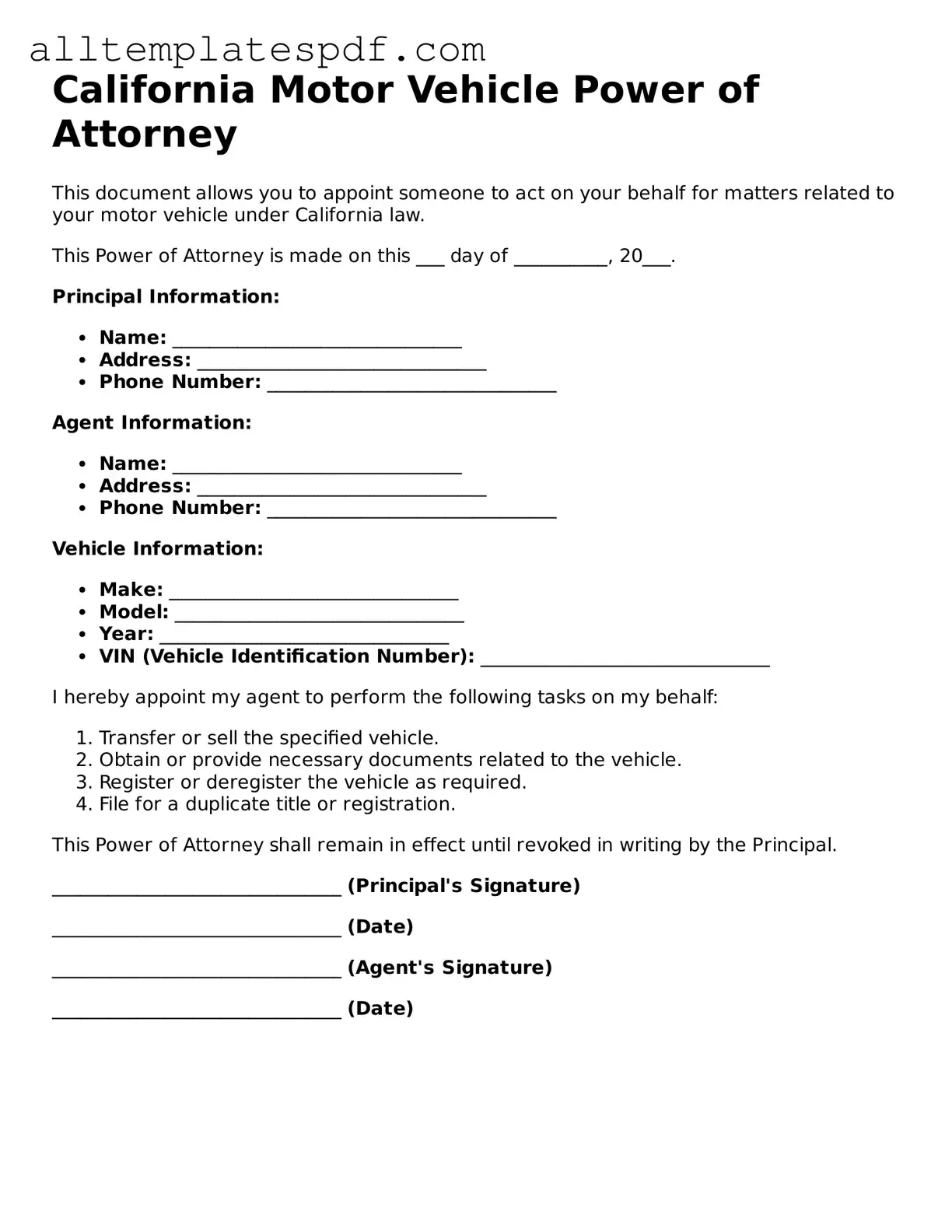Filling out the California Motor Vehicle Power of Attorney form can seem straightforward, but many people make common mistakes that can lead to delays or even the rejection of the document. One of the most frequent errors is failing to provide the correct information about the vehicle. It is essential to include the vehicle identification number (VIN), make, model, and year. Omitting any of these details can create confusion and complicate the process.
Another common mistake is not signing the form properly. The person granting power of attorney must sign in the designated area. If the signature is missing or does not match the name on the document, the form may be considered invalid. Additionally, forgetting to date the signature can also lead to issues, as the date indicates when the power of attorney was granted.
Some individuals overlook the importance of having the form notarized. In California, notarization is often required to ensure the authenticity of the signatures. Without this step, the document may not be accepted by the Department of Motor Vehicles (DMV) or other relevant authorities. Be sure to check if notarization is necessary for your specific situation.
Using outdated versions of the form is another mistake that can cause problems. The California DMV may update forms periodically, and using an old version can lead to complications. Always ensure that you are using the most current form available on the DMV's website or through official channels.
Additionally, people sometimes fail to specify the powers being granted. The form allows for the designation of specific powers, such as selling, transferring, or registering the vehicle. Not clearly outlining these powers can lead to misunderstandings and limit the effectiveness of the power of attorney.
Another frequent error is neglecting to provide complete contact information for both the principal and the agent. This includes names, addresses, and phone numbers. Incomplete contact details can hinder communication and create difficulties in executing the powers granted.
Some individuals may also forget to include any necessary additional documents. For instance, if the vehicle is jointly owned, the signatures of all owners may be required. Failing to gather and submit these additional signatures can result in delays or rejection of the form.
Another mistake involves not keeping a copy of the completed form. It is crucial to retain a copy for personal records. This allows the principal to have a reference in case any questions or issues arise in the future regarding the power of attorney.
Lastly, people sometimes rush through the process without reviewing the completed form thoroughly. Taking the time to double-check all information can prevent errors that might otherwise lead to complications. A careful review ensures that everything is filled out correctly and completely.
By being aware of these common mistakes, individuals can better prepare themselves to fill out the California Motor Vehicle Power of Attorney form accurately. Taking the necessary precautions can save time and avoid unnecessary complications in the future.
